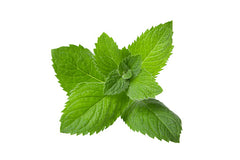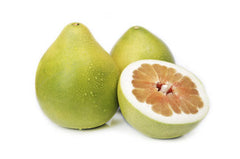What Does Allspice Smell Like?
Click For Affordable Inspired Perfume Alternatives

Embark on a aromatic journey to the spice islands and discover the captivating scent of allspice. Derived from the dried berries of the Pimenta dioica plant native to the Caribbean, allspice boasts a complex fragrance that captures the essence of warm and spicy orchards. Join us as we delve into the question: What does allspice smell like?
What Does Allspice Smell Like?
The fragrance of allspice is a symphony of warmth and spice, reminiscent of a rich blend of aromatic spices. Imagine the sweet warmth of cinnamon, the earthiness of cloves, and the subtle hints of nutmeg and pepper, all harmoniously combined. Allspice's scent is a celebration of a versatile spice that offers a comforting and aromatic olfactory experience.
Allspice's Spicy Symphony
Enter the world of allspice, where the fragrance is a harmonious symphony of warmth and spice. Join me on a fragrant journey to uncover the captivating aroma that defines the essence of allspice.
Warm and Inviting: A Spice Bazaar
Approaching allspice, the first olfactory impression is a warm and inviting embrace, reminiscent of a bustling spice bazaar. Picture the cozy warmth of cinnamon and the comforting sweetness of cloves intermingling. Allspice's fragrance is a celebration of spice brilliance, instantly transporting you to a market filled with exotic and aromatic treasures.
Rich and Complex: A Spice Medley
The scent of allspice is a rich and complex medley of aromas. It captures the depth and warmth of various spices, akin to a blend of cinnamon, cloves, nutmeg, and pepper. The fragrance is a testament to the complexity of allspice, creating a comforting and aromatic experience that echoes the spice-laden landscapes.
Earthy Elegance: A Hint of Nutmeg
While predominantly warm and spicy, there's an earthy elegance in allspice's scent, reminiscent of nutmeg. This subtle earthiness adds depth to the fragrance, creating a well-balanced composition that is both comforting and sophisticated. Allspice's aroma is a delightful interplay of warmth and earthiness, bringing to mind cozy kitchens and holiday festivities.
Versatile Spice: Culinary Allure
Delve deeper into the scent, and you may notice a culinary allure that characterizes allspice's fragrance. It's as if the aroma carries the essence of a well-seasoned kitchen, creating a mouthwatering and inviting olfactory experience. Allspice's versatility in both sweet and savory dishes is reflected in its rich and inviting scent.
Factors Influencing the Scent of Allspice Essential Oil
Allspice essential oil is crafted to capture the warm and spicy aroma of Pimenta dioica berries. The formulation of this essential oil involves a thoughtful combination of aromatic compounds. Here are several factors that contribute to the complex and inviting scent of allspice essential oil:
-
Fragrance Composition: Allspice essential oil is a carefully blended mixture of various aromatic compounds, chosen to replicate the characteristic scent of allspice. This composition may include both synthetic and natural ingredients to achieve the desired olfactory profile.
-
Spice Essence: At the heart of the essential oil lies the essence of allspice. Notes of warm cinnamon, cloves, nutmeg, and pepper are intricately blended to mirror the rich and complex aroma of allspice.
-
Synthetic vs. Natural Components: Allspice essential oil often combines both synthetic and natural ingredients. Perfumers make choices to strike a balance between authenticity, cost considerations, and sustainability in the selection of these components.
-
Extraction Method: The method used to create allspice essential oil, whether through steam distillation or extraction, plays a crucial role in defining the aromatic profile. Specific extraction methods contribute to the faithful recreation of the warm and spicy scent.
-
Additional Spice and Herbal Notes in the Blend: The essential oil may incorporate additional spice elements or subtle herbal notes to enhance complexity. These complementary notes contribute to the overall richness of the scent, capturing the essence of allspice.
-
Quality of Ingredients: The quality of raw materials, including the source of essential components, directly influences the warmth and authenticity of the allspice scent in the essential oil.
-
Perfumer's Artistry: The expertise and creativity of the perfumer or essential oil creator are crucial. Perfumers leverage their skills to balance different components, creating a distinctive and delightful allspice fragrance.
-
Regulatory Compliance: Adherence to regulatory standards and restrictions on certain fragrance ingredients is crucial. Compliance with safety guidelines requires careful consideration of ingredient choices to ensure the essential oil is safe for use.
-
Usage in Products: Allspice essential oil can be incorporated into various products, including perfumes, candles, room sprays, and bath products. The interaction with other ingredients in specific product formulations can influence how the allspice scent is perceived.
-
Product Type and Concentration: The concentration of allspice essential oil in a product affects the strength and longevity of the scent. Higher concentrations may be suitable for perfumes, while lower concentrations work well for candles, soaps, or room sprays.
-
Storage Conditions: Proper storage conditions for allspice essential oil, both before and after formulation, are essential to maintain its stability and scent. Storing it in a cool, dark environment helps preserve the warmth and complexity of the fragrance.
-
Consumer Preferences and Trends: Formulations of allspice essential oil may adapt to changing consumer preferences and market trends. The popularity of warm and spicy scents or unique blends may influence product formulations.
-
Artisanal vs. Commercial Production: Differences between artisanal and commercial production of allspice essential oil may impact ingredient sourcing, formulation, and overall quality. Artisanal methods may emphasize craftsmanship and unique blends.
-
Post-Formulation Processing: Additional processes, such as aging or filtering after the formulation of the essential oil, may influence the final scent and contribute to the desired characteristics.
Exploring different formulations of allspice essential oil allows consumers to experience a range of warm and spicy scents reminiscent of the comforting spice blend found within its berries. Individual preferences play a significant role in selecting the perfect allspice fragrance for various applications.
What to Look for When Choosing Allspice Essential Oil
Selecting an allspice essential oil allows you to enjoy the warm and spicy aroma of allspice in various applications. Whether used in perfumes, candles, or personal care products, consider these factors to ensure you choose a high-quality and authentic allspice essential oil:
-
Spice Authenticity: Seek an allspice essential oil that authentically captures the warm, spicy, and complex scent of real allspice. Look for an essential oil that embodies the unique spice notes characteristic of quality allspice.
-
Natural vs. Synthetic: Determine whether the essential oil is derived from natural sources or is synthetically produced. Natural allspice oils can provide a more nuanced and realistic scent, closely resembling the aroma of actual allspice.
-
Blend Ingredients: Check the blend of ingredients in the essential oil. A well-crafted combination of natural and synthetic components can contribute to a balanced and long-lasting allspice fragrance.
-
Intensity Level: Consider the intensity level of the allspice essential oil. Some may prefer a subtle and comforting scent, while others may desire a more pronounced and invigorating aroma. Look for an essential oil that aligns with your desired level of intensity.
-
Versatility: Choose an essential oil that is versatile and suitable for various applications. Whether used in perfumes, candles, soaps, or diffusers, versatility allows you to enjoy the warm and spicy scent in different settings.
-
Packaging: Assess the packaging of the essential oil. Opt for a bottle that is dark or opaque to protect the oil from light exposure, preserving its warmth and preventing deterioration over time.
-
No Residue or Discoloration: Ensure that the allspice essential oil leaves no residue or discoloration when incorporated into different products. A high-quality oil should seamlessly integrate into various mediums without causing unwanted effects.
-
Manufacturer Reputation: Research the reputation of the manufacturer or brand. Choose well-established brands with positive reviews, as they are more likely to produce reliable and high-quality essential oils.
-
Testing Options: Look for essential oils that offer testing options or sample sizes. This allows you to experience the scent firsthand before committing to a larger quantity, ensuring it aligns with your preferences.
-
Ethical and Sustainable Practices: Consider the manufacturer's commitment to ethical and sustainable practices. Brands that prioritize responsible sourcing and environmentally friendly production contribute to a more conscientious choice.
By considering these factors, you'll be better equipped to choose an allspice essential oil that not only aligns with your preferences but also ensures a high-quality and comforting olfactory experience in your chosen applications.
Where to Find Reputable Allspice Essential Oils
Discovering high-quality allspice essential oils can enhance your sensory experience and elevate your creative projects. Here are some reliable sources where you can find reputable allspice essential oils:
-
Specialty Aromatherapy Stores: Explore specialty stores dedicated to aromatherapy and essential oils. These stores often carry a variety of essential oils, including unique and exotic scents like allspice. Inquire about the authenticity and quality of the oils they offer.
-
Online Essential Oil Retailers: Browse reputable online platforms specializing in essential oils. Websites dedicated to aromatherapy, natural products, or DIY crafting may have a diverse selection of allspice essential oils. Check product descriptions and customer reviews for authenticity and quality.
-
Natural Health Food Stores: Some natural health food stores may carry a selection of essential oils, including allspice. Inquire about their sourcing practices and the quality of the essential oils they offer.
-
Local Apothecaries or Herbal Shops: Check with local apothecaries or herbal shops that focus on natural remedies and products. These establishments may carry high-quality essential oils, and the staff may provide guidance on their uses.
-
Online Marketplaces: Platforms like Etsy or other online marketplaces featuring handmade or artisanal products can be sources for allspice essential oils. Look for sellers with positive reviews and detailed information about their products.
-
Specialty Perfume Retailers: Explore specialty perfume shops that focus on unique and exotic fragrances. Some of these stores may carry allspice essential oils known for their distinctive and comforting spice notes.
-
Local Farmers' Markets or Craft Fairs: Check with local farmers' markets or craft fairs where independent sellers showcase handmade products. Artisan vendors may offer carefully crafted allspice essential oils, providing an opportunity to explore distinct options.
-
Word of Mouth: Seek recommendations from friends, family, or members of essential oil communities for trusted sources of allspice essential oils. Personal experiences and suggestions can guide you to reputable suppliers known for quality and authenticity.
-
Check Ingredients and Descriptions: Before making a purchase, carefully read product descriptions and check ingredient lists for allspice essential oils. Authentic and reputable sellers provide clear information about the composition and intended use of their products.
Note: Allspice essential oils can bring a warm and spicy note to your DIY projects. Ensure that the essential oil you choose aligns with your intended use, whether it's for perfumes, candles, diffusers, or other creative endeavors. Follow safety guidelines provided by the manufacturer for proper usage.
20 Questions and Answers about Allspice:
-
What is allspice in the context of perfumes? Allspice in perfumery refers to a scent note or fragrance ingredient that resembles the aroma of the dried berries of the Pimenta dioica plant. It imparts a warm, spicy, and slightly sweet fragrance to perfumes.
-
Is allspice a common ingredient in perfumes? Yes, allspice is used in perfumery, although it may not be as common as some other spices. It adds a unique and distinctive warmth to fragrance compositions.
-
What does allspice smell like in perfumes? Allspice in perfumes typically exudes a warm and spicy fragrance with notes of cinnamon, cloves, and nutmeg. It has a comforting and aromatic quality.
-
Which fragrance family does allspice belong to? Allspice is often found in fragrances belonging to the spice or oriental fragrance families.
-
Can allspice be a dominant note in a perfume composition? Yes, allspice can be a dominant note in certain perfume compositions, especially in fragrances that aim to showcase spicy and warm accords.
-
What other fragrance notes complement allspice? Allspice blends well with a variety of notes, including citrus, woods, vanilla, and other spices like cinnamon and cloves.
-
Are there any perfumes that prominently feature allspice? While specific perfumes may come and go, some fragrances might have allspice as a notable component. Checking current perfume releases or consulting with a fragrance expert can provide up-to-date information.
-
Is allspice used in both men's and women's perfumes? Yes, allspice is a versatile note that can be used in both men's and women's perfumes, depending on the overall fragrance composition.
-
Does allspice have any cultural or historical significance in perfumery? Allspice has been used in traditional medicine and cooking for centuries. In perfumery, its warm and comforting aroma may evoke a sense of nostalgia or historical charm.
-
Can allspice be a part of natural or synthetic fragrance blends? Allspice can be incorporated into perfumes using both natural extracts derived from the Pimenta dioica plant or through synthetic fragrance compounds that mimic its scent.
-
Does allspice have any therapeutic properties in perfumery? While allspice itself may not have direct therapeutic properties in perfumery, its warm and aromatic qualities can contribute to a fragrance's overall mood-enhancing effect.
-
Can allspice be overpowering in a perfume? Like any fragrance note, the intensity of allspice in a perfume depends on its concentration in the composition. In higher concentrations, it may dominate, while in lower concentrations, it might serve as a subtle accent.
-
Are there any cautionary considerations when using allspice in perfumes? While allspice is generally safe for use in perfumery, individuals with allergies or sensitivities to spices should exercise caution. It's always advisable to conduct patch tests before applying any fragrance.
-
How does allspice contribute to the longevity of a perfume? Allspice, like other base notes, can contribute to the longevity of a perfume. Its rich and warm character helps anchor the fragrance and slow down the evaporation of the more volatile top and middle notes.
-
Can allspice be found in niche or designer perfumery? Allspice can be found in a variety of perfumes, including both niche and designer brands. The use of allspice depends on the creative vision of the perfumer.
-
Does the geographic origin of allspice influence its scent in perfumes? The geographic origin of allspice can impact its fragrance profile. Different varieties of Pimenta dioica may exhibit subtle variations in scent due to factors like soil, climate, and cultivation methods.
-
Is there a season or occasion that suits perfumes with allspice? Perfumes with allspice are versatile and can be suitable for various seasons. However, their warm and spicy nature may make them particularly appealing during fall and winter or for evening wear.
-
Can allspice be combined with floral notes in perfumes? Yes, allspice can be paired with floral notes to create a well-balanced fragrance. The warmth of allspice can complement the sweetness or freshness of floral accords.
-
Is there a trend in the perfume industry regarding the use of allspice? Perfume trends can vary, and the popularity of specific notes, including allspice, may ebb and flow. Staying updated on current releases and industry trends is the best way to gauge the use of allspice in perfumery.
-
Are there any classic perfumes that have stood the test of time featuring allspice? Classic perfumes may or may not feature allspice prominently. However, some timeless fragrances are known for their spice accords, and allspice could be a hidden gem in their ingredient list.
Buy Perfumes - Best Online Retailers
Click For Affordable Inspired Perfume Alternatives
Click For The Best Niche Perfumes & Decants
Pheromone Perfumes - Confidence, Attraction & Appeal - Click For More
Home Fragrances & Candle Warmers - Click To Scent Up Your Spaces Today!



